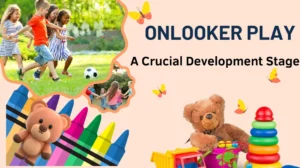As an educator, you understand that the environment in which children learn plays a crucial role in their development. The furniture in a preschool classroom is no exception. The right furniture can provide comfort, support learning, and even promote positive behavior. In this blog post, we’ll take a closer look at the furniture that every preschool classroom needs.
1. Tables and Chairs

Tables and chairs are essential in a preschool classroom. Children need a place to sit and work on activities or eat snacks. When choosing tables and chairs, it’s important to consider the size and height. Preschoolers are smaller than elementary school students, so the furniture should be appropriately sized for their needs. Chairs should also have good back support and be stable to prevent falls.
2. Storage Units

Preschool classrooms require a lot of supplies, from art materials to learning materials. Storage units can help keep everything organized and easy to access. Shelves, cubbies, and cabinets are all great options for storage in a preschool classroom. They should be easy for children to use and safe, with no sharp edges or corners.
3. Bookcases

Books play a significant role in a child’s education and development, and a well-stocked library can make a big difference in a preschool classroom. A bookcase can help keep books organized and accessible for children. Look for bookcases with adjustable shelves to accommodate different sizes of books.
4. Play Area Furniture

Play is an essential part of learning for preschoolers, and the furniture in a play area should encourage exploration and creativity. Soft mats or rugs can provide a comfortable surface for playing, while bean bags or floor cushions can provide seating for quiet reading or imaginative play.
5. Art Easels

Preschoolers love to explore their creativity through art, and art easels can help facilitate this exploration. Easels provide a stable surface for painting, drawing, and other artistic endeavors. Look for easels that are height-adjustable and have trays for holding art supplies.
6. Resting Mats

Rest is important for young children, and preschool classrooms should have a designated space for naptime or quiet time. Resting mats can provide a comfortable surface for children to rest on, and they should be easy to clean and sanitize.
7. Sensory Tables

Sensory play is a critical part of a preschooler’s development, and sensory tables can provide opportunities for hands-on learning. These tables can be used for a variety of sensory activities, from exploring different textures to learning about cause and effect.
In conclusion, the right furniture is critical for a preschool classroom. Choosing appropriate tables and chairs, storage units, bookcases, play area furniture, art easels, resting mats, and sensory tables can help support learning, creativity, and positive behavior. When selecting furniture, consider the children’s size and needs, safety, and durability. The right furniture can make a significant difference in the educational experience of preschoolers.












